InTheGarageMedia.com
 Photography by John Jackson
Photography by John Jackson
ftentimes the “beauty” of any hot rod lies in the subtleness of the build. It can be said that the key to constructing a good-looking hot rod for the street, regardless of year, make, or model, rests in your eluding the exaggeration of the build. We believe this can be applied to George Lange of St. Louis, Missouri’s ’56 Chevy 210. It was built under the care of Bobby Alloway at Alloway’s Hot Rod Shop. The subtle yet eye-catching build was also noted by the judges at the Danchuk Tri-Five Nationals this past year. While in Bowling Green, Kentucky, the panel selected this ’56 as the Tri-Five of the Year. It was literally selected from a field of thousands to take home the honors.

In the ’90s General Motors produced a limited production run of 356-T6M aluminum ZL-1 blocks with PN 12370850 (weighing approximately 110 pounds, which is 12 pounds heavier than the original block). There were also a handful of internal upgrades made to the block to make it even better. One such change was to convert the block from a mechanical flat-tappet camshaft to a modern hydraulic roller ’stick.
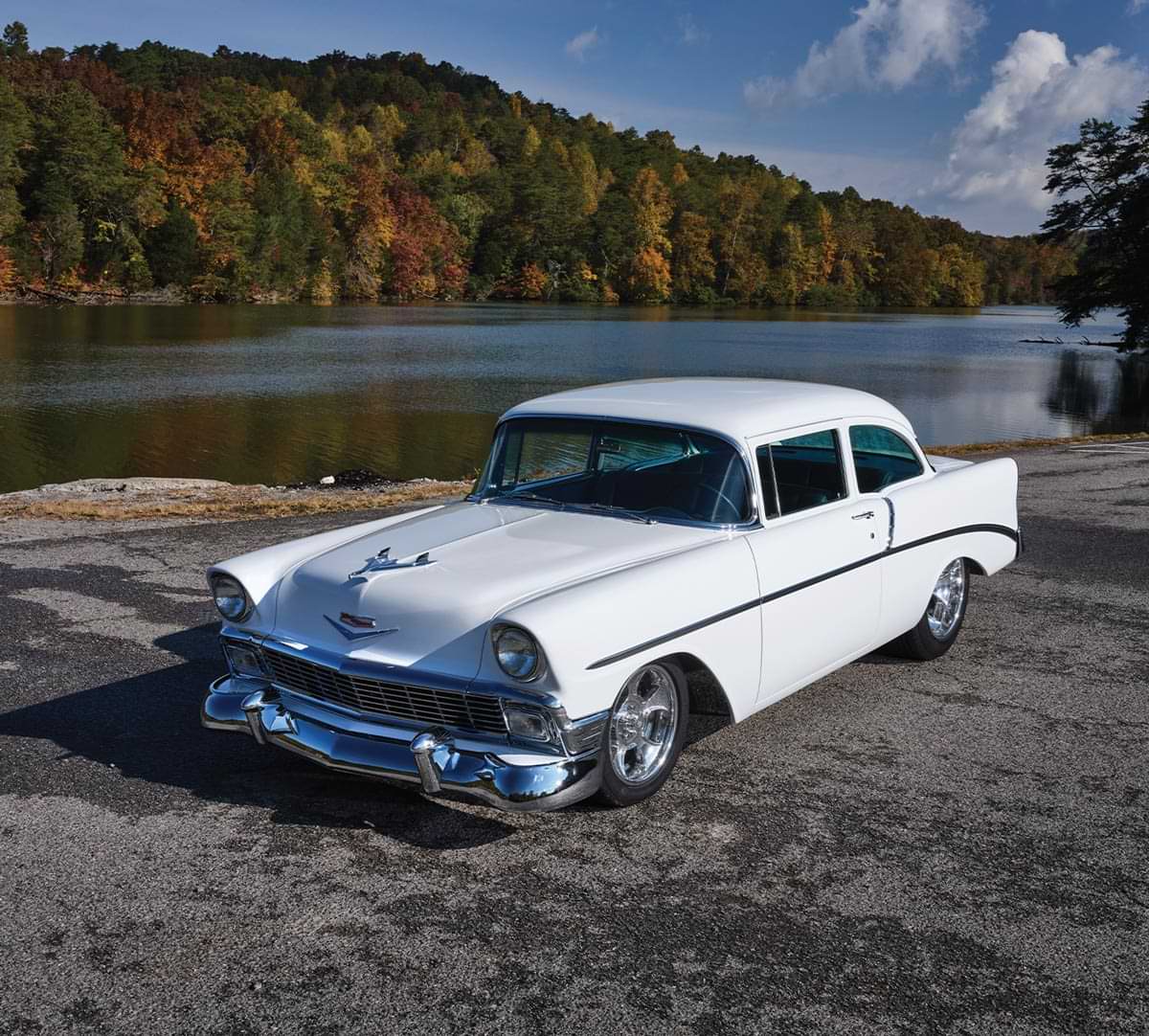

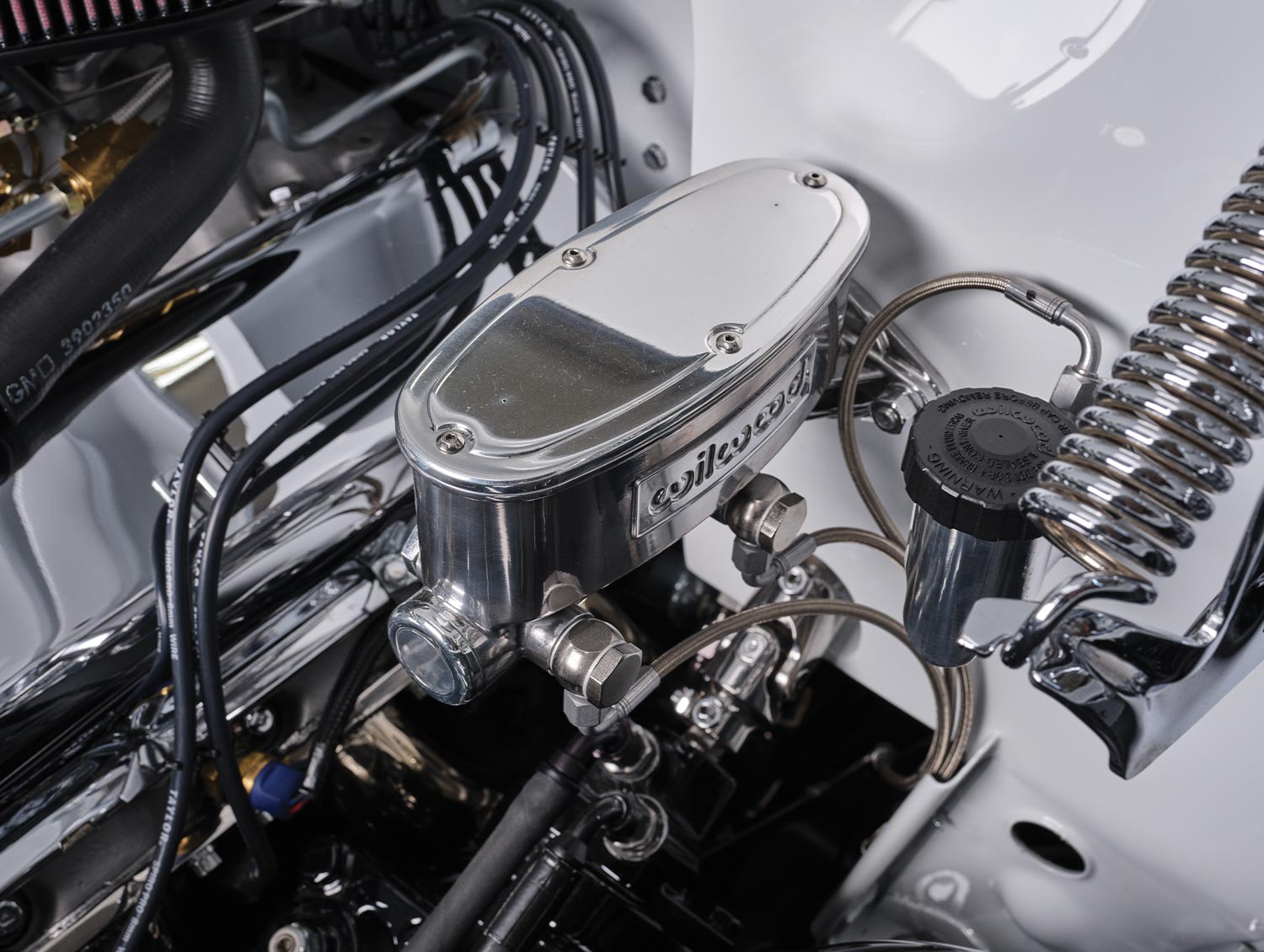
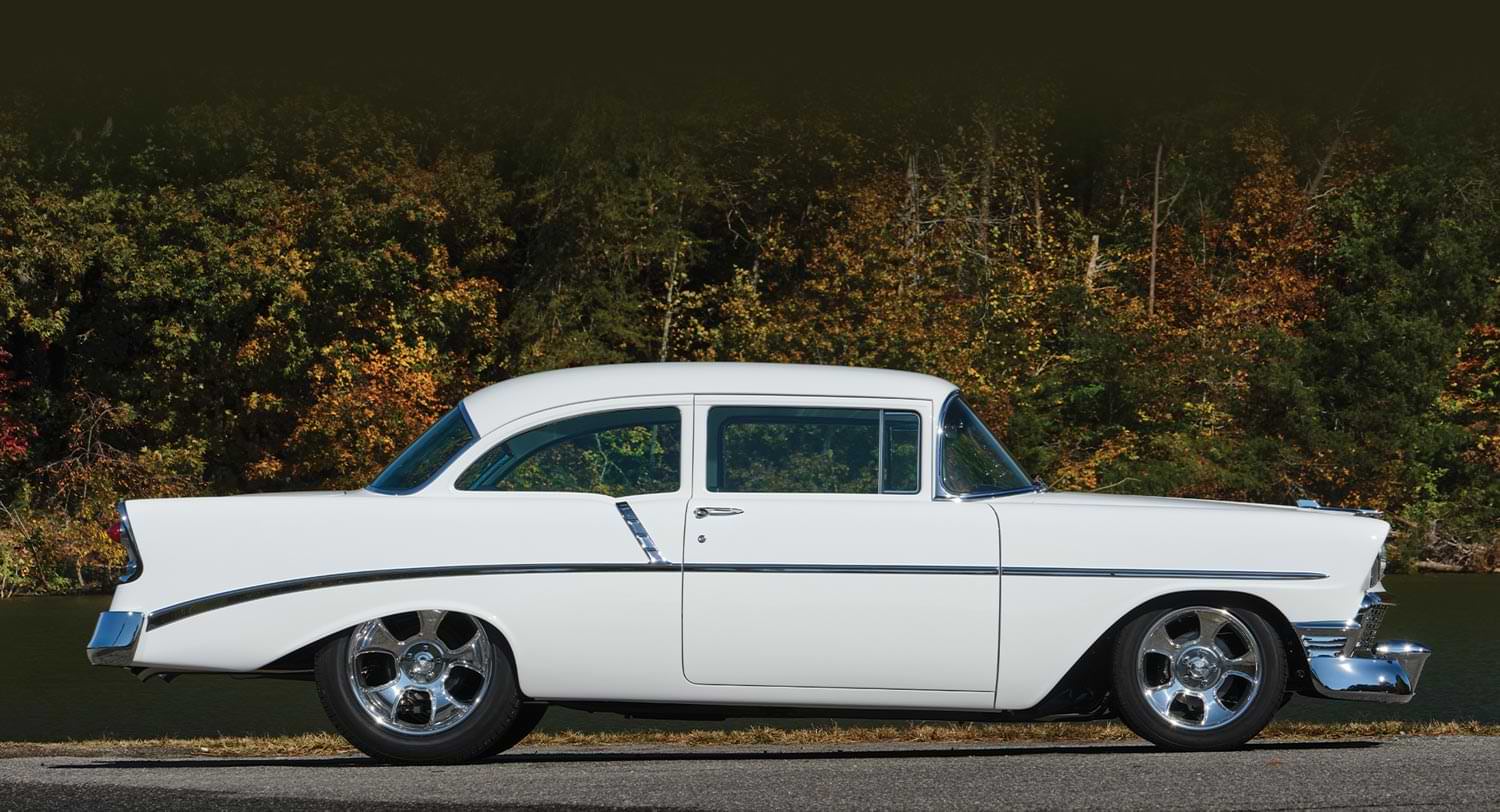
It is one of these that Alloway used as the basis for the big-block in this ’56 Chevy. The block carries the original casting number of 3946053 from the original tooling, which was also used. (It should be noted that the letter/number designation of ZL-1 was initially used with the original ’69 ZL-1 COPO Camaros. There were 69 made for Camaros and two for ’69 Corvettes. A word on the economics of a ’69 Corvette. The ZL-1 option cost $4,718.35 added to the base price of $4,781 for a ’69 Corvette. A little quick math and a hot rodder was looking at a total of $9,499 for a ’69 Corvette. Rare air for sure but there was nothing else around that could compare. The hyphen in ZL-1 was dropped when the ZL1 was used once again in 2012 on the fifth-generation Camaro.)
During the process Jeff Taylor Performance Engines was tapped to build the retro-looking 427 big-block filled with plenty of ARP hardware, MSD ignition, Taylor wires, a Powermaster starter, and a Vintage Air Front Runner. The amazingly good-looking stainless headers and exhaust system come from Barillaro Speed Emporium that also feature Borla ProXS stainless mufflers. You will immediately notice that the aluminum big-block features ’68 aluminum heads (right down to the “snowflake” cast into the heads) as well as the Corvette aluminum intake that holds the highly distinctive Corvette Holley Tri-power of the day.
Working all this power rearward it finally arrives at a Currie 9-inch rearend with 35-spline axles, 3.70 gears, Truetrac (limited-slip) differential, and drum brakes. Wrapping up the remainder of the rear suspension is a Ridetech four-link with their coilovers and an Alloway-fabricated Panhard bar. The front suspension is based on Heidts tubular arms, dropped spindles, coilover shocks, and Wilwood brakes based on 11-inch rotors with four-piston calipers. The entire brake package is operated through a Wilwood master cylinder and factory pedals.



From here the 500hp big-block is backed up to a TREMEC TKO five-speed. The American Powertrain Pro-Fit TKX kit for any of the Tri-Five Chevys was used. Aside from the five-speed the kit comes with a transmission crossmember, polyurethane mount, driveshaft, slip yoke, pilot bearing, shifter mechanism, shifter knob, and other hardware.
Working all this power rearward it finally arrives at a Currie 9-inch rearend with 35-spline axles, 3.70 gears, Truetrac (limited-slip) differential, and drum brakes. Wrapping up the remainder of the rear suspension is a Ridetech four-link with their coilovers and an Alloway-fabricated Panhard bar. The front suspension is based on Heidts tubular arms, dropped spindles, coilover shocks, and Wilwood brakes based on 11-inch rotors with four-piston calipers. The entire brake package is operated through a Wilwood master cylinder and factory pedals.
There’s no question how popular any of the Tr-Five cars are among hot rodders. While it’s long been the ’57 or possibly the ’55 as the most popular there’s no denying that the much-forgotten ’56 has come on strong. We are seeing more and more of the middle “sister” gaining in popularity.
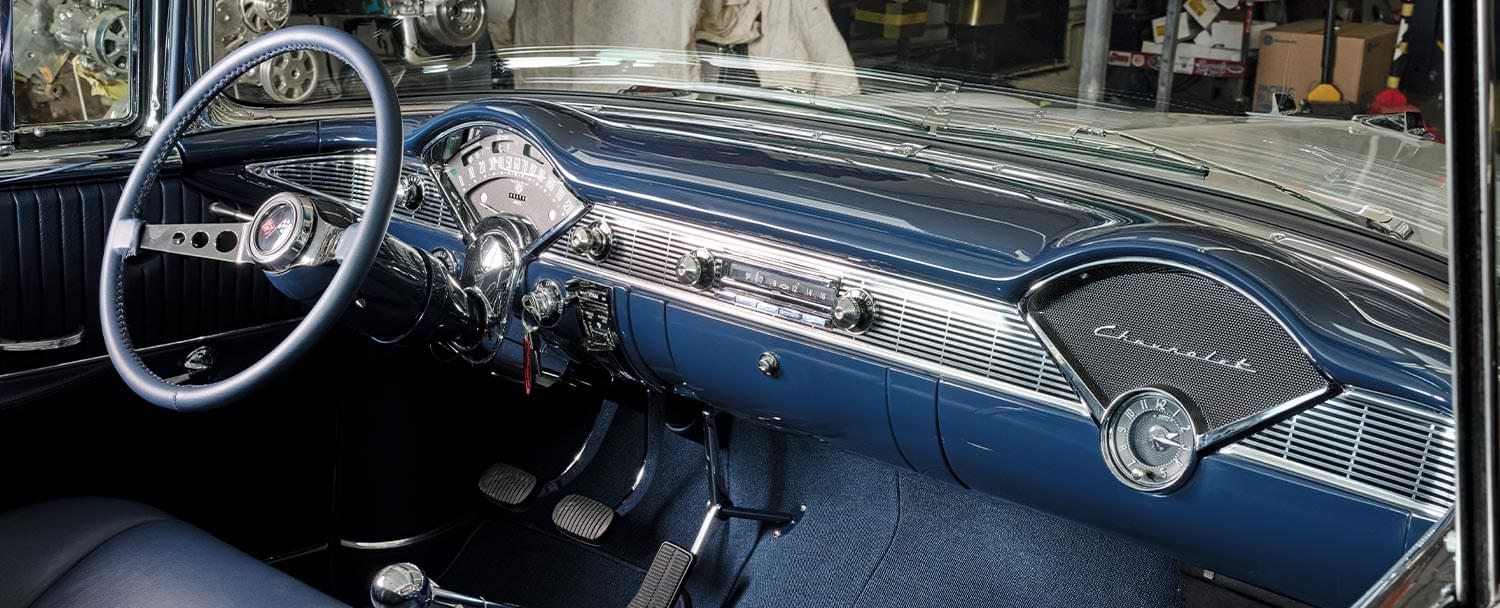
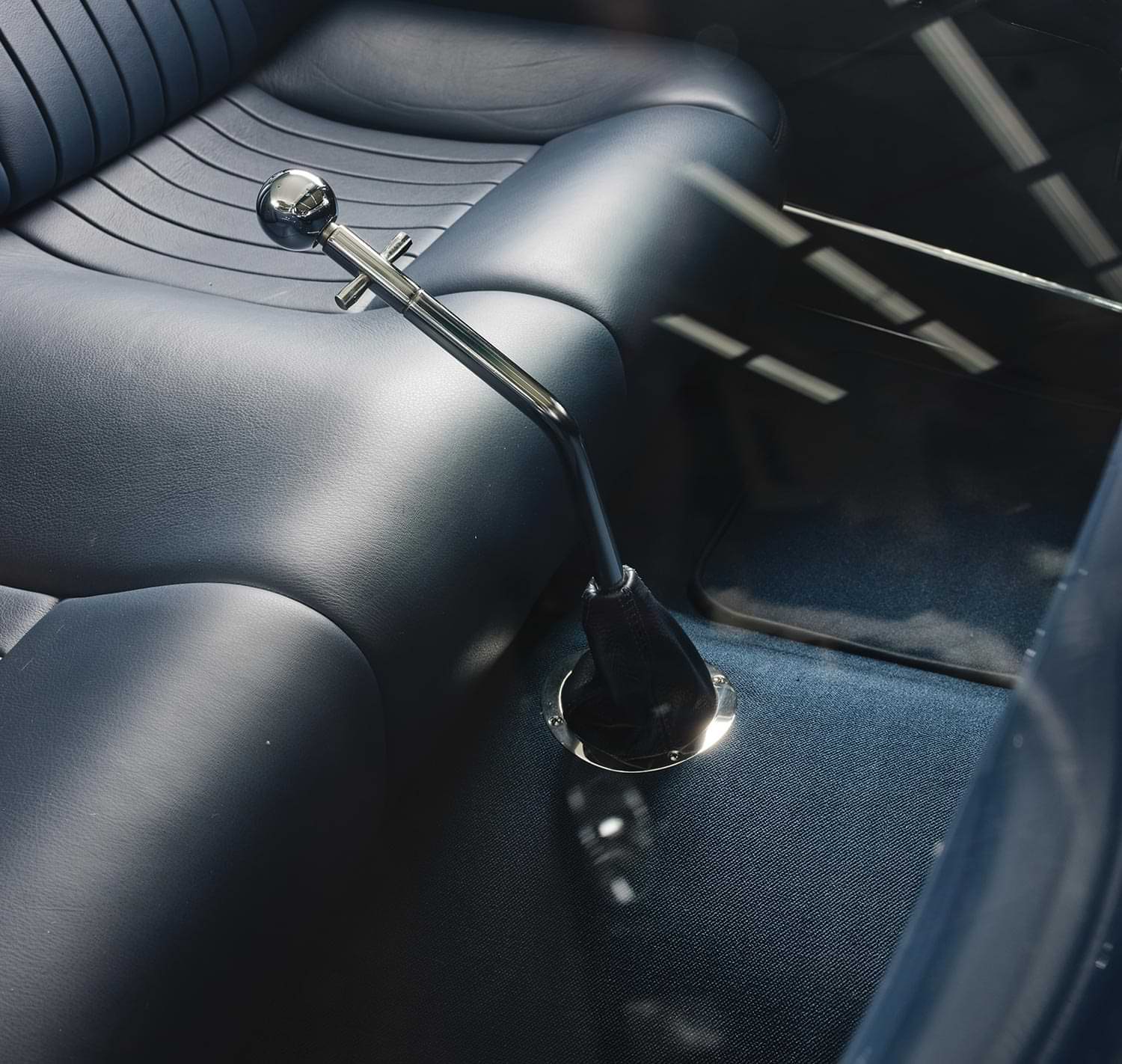

Modern Rodding
VOLUME 4 • ISSUE 29 • 2023